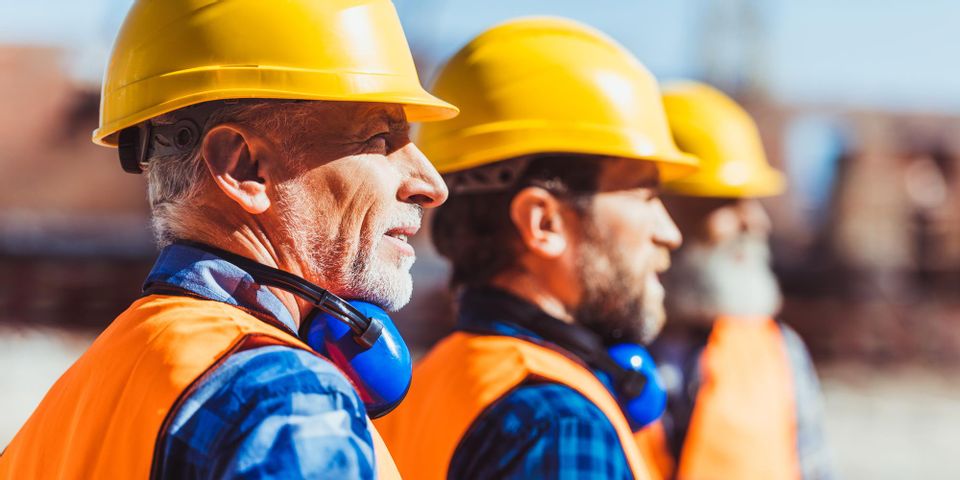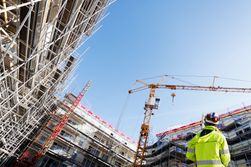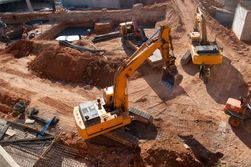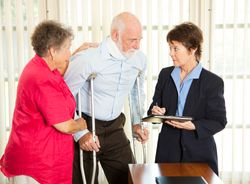What Construction Workers Need to Know About Personal Injury Claims

Construction workers create and maintain homes and cities. The work is exciting but potentially dangerous. The government has safety regulations, but they’re not always followed. Construction sites have four leading causes of injuries. There are steps you can take to prevent them, but if a personal injury is unavoidable, you can hold accountable those at fault.
Common Causes of Construction Site Injuries
In 1970, the Occupational Safety and Health Administration (OSHA) was created to evaluate workplace safety. Under their rules, every jobsite must inform employees of OSHA regulations and provide safety manuals. OSHA also requires employers to provide safe equipment, tools, and remove hazards from the workplace. If there are potential hazards, employees should be told about them in plain, simple language. However, not every site follows these guidelines. OSHA only has 2,100 inspectors who can’t inspect all the eight million jobsites across the country. Without proper regulation and safety, construction site injuries can happen.

Falling
Falls are the most common injury experienced by construction workers. Every year, over 100,000 people are injured in work-related falls. Employers need to install guard rails and toe-boards on open platforms. If your jobsite has hazards, you should report it to your supervisor. If the hazards aren’t removed, you can request an OSHA hazard inspection or lodge a complaint with a local office.
Elevated job sites require safety harnesses, stair railings, sturdy scaffolding, and debris netting. Many job sites have unprotected openings in the floor, on the sides, and in walls. This leaves workers vulnerable to falls and falling objects.
At elevated job sites, unsafe scaffolding construction can lead to personal injuries. With many workers and heavy machinery, scaffolds don’t provide much space for movement. Improperly installed or nonexistent guard rails pose a fall danger to workers and equipment.
When working on a new building or doing an extensive remodel, there are networks of exposed steel rebars. Tripping on one can lead to severe cuts or impalement. The rebars should be capped, covered with wooden troughs, or bent so they aren’t a danger.
Ladders are a basic tool on any construction site. If the ladder is defective, it could be imbalanced, putting you at a higher risk of injury. Be careful where the ladder is positioned—falls can easily happen on uneven surfaces.
Being Hit by Objects
Construction workers are also at an elevated risk of getting struck by objects. Suspended loads and tools can fall. When using demolition equipment, debris can be launched around the area. In lifting operations, load swaying can be difficult to control. Wall chunks can fall from the site and to the ground below if not properly netted. On busy sites, large vehicles come and go very often. Construction workers can be struck in these situations, especially if precautions aren’t taken.
Hard hats and safety goggles should be worn whenever on-site. If you’re working in a high-debris area, include a face shield. Debris nets should also be installed nearby. Whenever possible, avoid areas where work is going on above. Tools and suspended loads should be protected by guardrails, screens, or netting. When vehicles and machinery are being used, stay away from them. If you need to pass, do so at a distance where the driver can see you.
Getting Caught by Equipment
 Trenching—also known as caught-in-between—is another common construction site injury. It’s often seen in excavation or demolition jobs. Workers are sometimes caught between collapsing materials. Trenching also occurs when body parts are pulled into unguarded machines. They also may be pinned in rollovers from construction vehicles like cranes, bulldozers, and backhoes.
Trenching—also known as caught-in-between—is another common construction site injury. It’s often seen in excavation or demolition jobs. Workers are sometimes caught between collapsing materials. Trenching also occurs when body parts are pulled into unguarded machines. They also may be pinned in rollovers from construction vehicles like cranes, bulldozers, and backhoes.
Trenching can cause injuries and exposure to harmful dust and chemicals. Familiarize yourself with dangerous equipment and where they might latch onto clothing. Wear tight clothes that’s unlikely to be snagged. Place wheel chocks under tires to prevent rollovers. If working near trenches, make sure there are ramps or ladders to provide access and avoid falls. For safety, employers should provide trench boxes, shielding, or protective spoil-pile placement.
Electrocution
Over 16% of workplace electrocutions in 2017 happened on construction sites, affecting 10,000 workers. Electrocutions often cause burns and falls. This occurs when workers are exposed to active power lines or faulty wiring. If the current is strong enough, they can also cause fires or explosions.
To avoid injuries, the company should provide workers with proper safety training and Arc Flash protective gear. Electrical equipment should be fitted with electrical lockout/tagouts and breaker lockouts to ensure the electricity is off. When working on these sites, use electrical gloves, face shields, and insulated tools.
What Should You Do After You’re Injured?
Consult an Attorney
Sometimes, a workplace personal injury can’t be avoided. Depending on the circumstance, it can be the fault of one or multiple parties. If your employer hasn’t created a safe working environment, the fault could be theirs. If the building you’re working on has poor wiring, the fault could be with the building owner and not the company. If your injury was caused by a co-worker, they or the company could be at fault. The incident might even partially be OSHA’s responsibility if they never inspected the job site.
 A personal injury attorney can simplify the matter. They can help determine fault, whether you’re seeking workers’ compensation or a personal injury claim. Your lawyers can file claims and notify insurance companies and OSHA. If your claim proceeds to court, your attorney will represent your interests and fight to see that you’re compensated for your injury.
A personal injury attorney can simplify the matter. They can help determine fault, whether you’re seeking workers’ compensation or a personal injury claim. Your lawyers can file claims and notify insurance companies and OSHA. If your claim proceeds to court, your attorney will represent your interests and fight to see that you’re compensated for your injury.
If an injury occurs, you need to move quickly but calmly. Call 911 and alert your supervisor. Doctors can assess, diagnose, and treat your injury. In some cases, the severity of the damage caused isn’t immediately clear. Symptoms may take days or weeks to develop. The long-term effects may not be understood for years. In Nebraska, you have four years from the date of the injury to file a personal injury claim. However, you should contact an attorney as soon as possible after your injury occurs.
Keep Detailed Records
Collect the names and contact information of any witnesses to your injury. If you file a personal injury claim, witnesses can support your account of the incident. Take pictures of your injury, the area in which it happened, and whatever tools or machines caused the injury. The pictures establish a record that can be used as evidence to prove negligence on the part of your employer.
A written record of the event will need to be established. Both you and your supervisor need to document the events leading up to the injury. It’s best done early when the incident is still fresh in your mind. Use simple, clear language. In personal injury claims, you’ll be asked about the incident repeatedly. Having an established written account backed up by medical and witness reports will help your case. Both you and your supervisor’s statements might be used if you file a claim. Make sure you receive a copy of their statement. Under OSHA regulations, you have a legal right to keep copies of it for your records.
While seeking treatment, insurance companies will be often unwilling to pay and medical bills can become expensive. When pursuing a personal injury claim, the at-fault party can be held responsible for paying your medical expenses along with damages for your pain and suffering. Make sure to get copies of your updated medical reports for your records. Share each medical update with your supervisor. A complete record of your injuries must be established so your employer can’t claim these issues are unrelated later.
Construction site injuries occur far too often. When they do, fault needs to be assigned for the pain you’ve endured. If you’ve experienced a personal injury at work, reach out to Salerno & Associates. Since 1992, they’ve built a reputation for holding responsible parties accountable. They aren’t afraid to bring claims to court or fight the insurance companies. Most of all, they care about the well-being of their clients and are invested in providing the justice you deserve. If you’re in Omaha, NE, schedule an appointment at (402) 502-9002. For a list of their practice areas, including workers’ compensation and medical malpractice, visit their website.
About the Business
Have a question? Ask the experts!
Send your question

